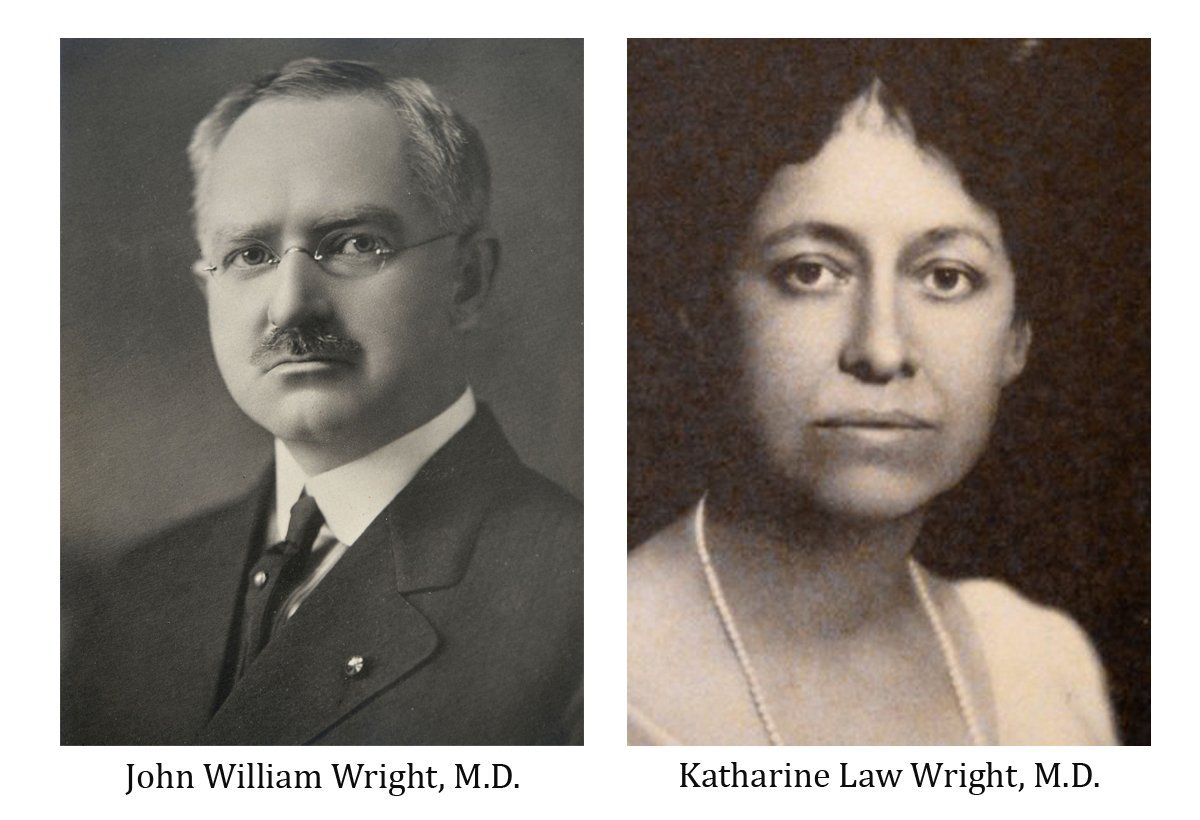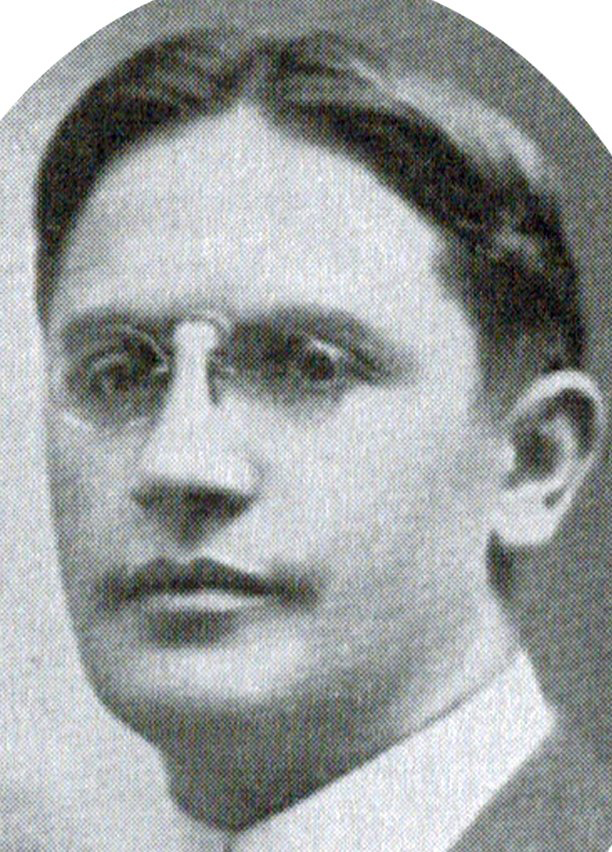Survivors
Walter Kauffman, 79, of Erie, stands between the headstones on his grandparents' graves in Section 5 of the Erie Cemetery on Nov. 12. His grandparents, Katharine Law Wright and John William Wright, were both doctors who treated the sick in Erie during the Spanish flu epidemic of 1918. [CHRISTOPHER MILLETTE/ERIE TIMES-NEWS]
Erie doctors, mayor continued public service after epidemic
Doctors John and Katherine Wright and Mayor Miles Kitts had a longtime effect in the city
A husband-and-wife team of doctors fought on the front lines of the Spanish influenza epidemic in Erie in 1918 and continued to lead city health efforts until as late as 1960.
Erie's mayor during the epidemic was a former educator and state legislator who later returned to the General Assembly and served as president judge of the Erie County Court of Common Pleas.
John W. Wright, M.D., then 50, was in charge of the city's Board of Health during the 1918 flu and was appointed by state Health Commissioner Benjamin Franklin Royer to lead the fight against the viral infection in Erie, Crawford and Venango counties.
His wife, Katharine Law Wright, M.D., 41 in 1918, operated a free clinic at West 21st and Peach streets.
"It must have been a terrible time," said the couple's grandson, Walter Kauffman III, 79.
Kauffman is descended from J.W. Wright's first wife, Clara Keller. His wife, Peg Kauffman, has researched his family history. No stories of the 1918 epidemic were passed down through the family, she said. J.W. and Katherine's only child, Virginia, was only 4 years old in 1918.
"That generation of doctors didn't really talk about their work or their patients," Peg Kauffman said. "And Virginia would have been too young to understand."
The couple was well respected, she said.
"Doctors in those days also did no wrong. Their patients, everyone, thought that they walked on water," Peg Kauffman said.
By the end of the 1918 Spanish influenza epidemic, though, some members of the public thought J.W. Wright should have reimposed a ban on public gatherings after an Armistice Day celebration sparked a resurgence of the virus.
Wright had decided that no ban or quarantine could prevent the spread of the deadly flu and that the only recourse would be to let it run its course. An earlier five-week ban on public gatherings, quarantines of families infected, and arrests for conducting business or spitting in public during the ban had not stopped the virus' spread.
Still, he was stung by the criticism.
"I feel that we have done everything possible and we are in no way responsible for any deaths," Wright said on Dec. 19, 1918.
J.W. Wright was a native of Crawford County and earned his medical degree from Jefferson Medical College in Philadelphia. He began practice in Wattsburg in 1891 and moved the practice to Erie, at 247 W. Eighth St., in 1896.
He served as an assistant surgeon during the Spanish-American War.
J.W. Wright was appointed county medical inspector in 1900 and held the position until 1921. He served as city health officer until his death in 1926.
Katherine Wright was an Erie native and earned her medical degree from the Women's Medical College of Philadelphia. She did "special duty" for the Pennsylvania Health Department through the influenza epidemic, according to Dr. John Chaffee's 1990 "Reflections on Erie County Physicians," and signed the death certificates for a number of its victims.
She was director of the clinic at 21st and Peach streets from its opening during a typhoid epidemic in 1912 until 1960. She died in 1966.

Miles B. Kitts, then 38, was the city's mayor during the Spanish flu epidemic.
A Summit Township native and a graduate of what now is Edinboro University of Pennsylvania, he studied nights to be an attorney while working as a public school teacher and principal. He was elected to the state House of Representatives in 1912 and served two terms.
Kitts left the House to run for Erie mayor in 1916 and served in that post until 1924.
Highlights of his two terms as mayor included successful resolutions to build the Perry Monument and to purchase the Perry House at East Second and French streets. The city also obtained the Flagship Niagara under Kitts' leadership, according to a biography in "Memoirs of the Erie County, Pennsylvania Bench and Bar, Volume II."
Kitts also was largely responsible for the construction of the Mill Creek tube, an underground channel that carries Mill Creek under the city, after a flood in August 1915 left dozens of people dead and caused millions in property damage.
He was elected to the state Senate in a special election in 1927 and was a state senator until 1932. He served as president judge in the Erie County Common Pleas Court from 1935 until 1945 and later was a district justice in Girard Township.
"He was, without question, one of the most popular men in Erie County," according to his Erie Times-News obituary in 1947. "He counted his friends by the thousands and it was his pride that he could call most of them, men, women and children in all walks of life, by their first names."
Valerie Myers can be reached at 878-1913 or by email. Follow her on Twitter at www.twitter.com/ETNmyers.
